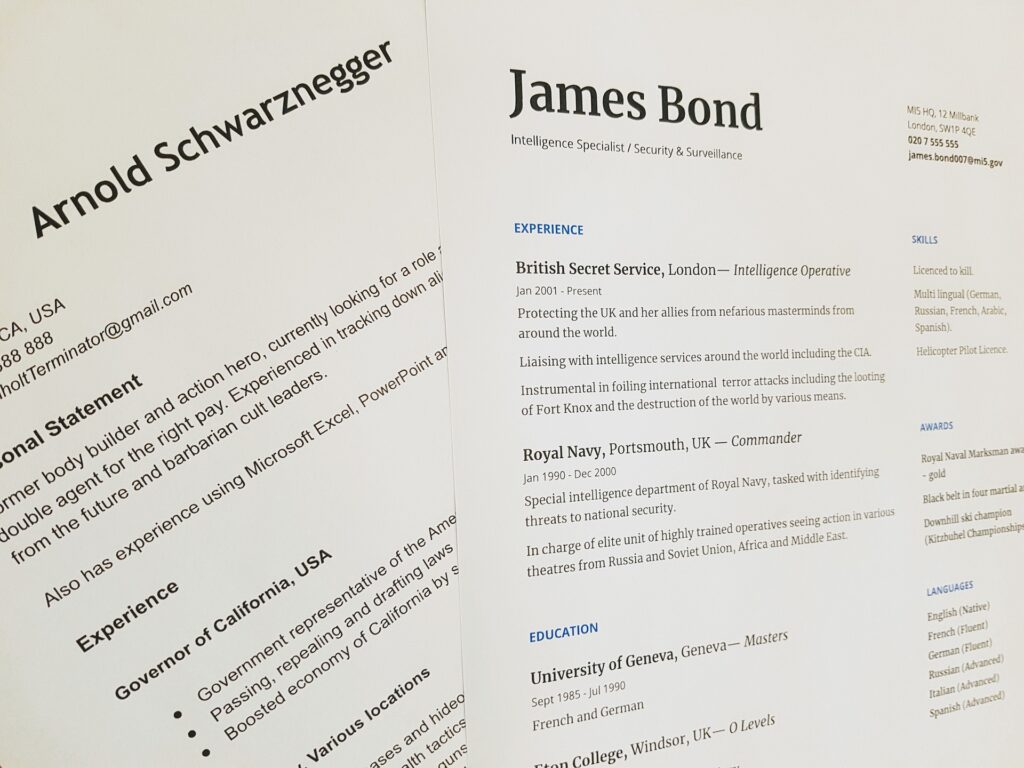Resume Writing – an Insider View

Why Resume?
A resume serves a dual purpose. One is for applying for jobs that we aspire for. Two, a self-introspection tool, to evaluate our core skills, the nature of our job, and most importantly, whether we are following the right career path.
What is the Big Deal?
Mimicking computers will get us nowhere! Every site on resume writing challenges ATS-friendliness or ATS-approvals. Don’t get yourself bogged down by that jargon.
For those who still want to know, ATS is an acronym for the Applicant Tracking System. It works on a simple keyword-based evaluation and archiving system. The truth is not many companies can still afford ATS. It is used for the masses. Works on algorithms that are tweaked by human interventions. Meaning, you still can’t fool the machine. Anyways, a well-made Resume will stand the test of time – and ATS too.
Whom to go with?
Some good resume companies give away the framework to the prospects. Enthused, the prospect can try a DIY exercise. But can you carry the experience and wisdom, that a trained writer has? My answer is No! You are free to disagree!
Undeniably, some writers charge heavily. Some say I have a factory outlet. Not taking names, some job portals act like assembly lines, throwing us in and out. They do have the strength of numbers, to which we fall prey. Can they bring out the person in us? I emphatically say No!
Can you wear two hats at a time? One, can you see the person’s perspective? Another, can you evaluate how (s)he is – in Hawkeye’s view? This is what happens when you engage in personalized services. Be ready to hear some bitter facts about yourself.
You shall know, how you weigh in the employer’s perspective, which is something very important and a thing you must know.
There is no perfect barometer to evaluate the price vis-à-vis services. Your involvement in the process also needs to be factored in.
Few fundamentals
- Work on your future. Decide where you want to see yourself. Don’t buy tickets everywhere. Catch on your ikigai early.
- Clarity on targeted roles and likely companies is the first step to resume writing.
- Mapping what is required in terms of skill sets, key competencies, and keywords, with what you genuinely have in you, is essential. This would make the summary.
- For the sake of aspirational jobs, don’t fake your competencies. This is akin to cutting your legs for the shoes.
- To be honest, bring out your contribution to the jobs you have been through. Having worked passionately, each one of us would have many achievements to flaunt. Nobody would know unless you speak up for yourself.
- Project your Projects – for the problems you solved, people you helped, businesses you brought up, and impacts you made. This is to showcase the extent to which you can stretch yourself or the scale at which you can operate at times of need.
Few mandates
- Listing key competencies, soft skills, and technical skills. Too many would sound pompous; too few becomes insubstantial. Ideally, 12 professional competencies; 8 soft skills; and as many ‘relevant’ technical skills would be needed.
- While educational degrees (graduation and post-graduation) are done and dusted; relevant professional certifications carry more significance to indicate that the person continues to learn and stay abreast.
Truth be told
- Bluntly put, employers are not interested in what you did ten years ago. They are keen to know whether you will serve their cause for the next three to five years. Hence, it becomes very important that we retain their attention, by limiting our narration on work experience to the recent and relevant past.
- Depending on the jobs that we have been through, it may be a four to six-year window. No harm in bringing up some items from the past, as long as it is relevant to the role that we are aspiring for.
- Let go of the past baggage, it is a life lesson, that we need to exercise.
- Using action verbs is a linguistic mandate while writing the work experience. This style is diametrically opposite when compared to Summary writing.
- While we restrict the writing to the recent and relevant past, we are allowed to showcase the entire journey in a career snapshot. Normally, a pictorial form represents where we began, where we have been through, and where we are now.
- Experience can be narrated in two ways. One is the conventional reverse-chronological way. Another is the core-competency-based functional resume. The latter is generally used for senior profiles or for long tenures in one organization, where experiences could be spread wide and staggered. For academic purposes, there is a third way, called the hybrid – basically, a conventional resume, sub-divided functionally.
Do you need a Covering Letter?
- Yes. For two reasons. One, it evokes accountability for a response from the receiver. Two, it can act as an extract of the resume, for consumption by the busy (lazy) recruiter.
- Anyways, it feels good to forward resumes with a cover letter rather than sending them without a wrapper.
Do you need Professional Help?
- Yes. At least for the first time, to get on to the groove. Later, editing isn’t that difficult.
- There are quite a number of things that a professional can help you with.
- Language, presentation, fitment, technical know-how, evaluation, and more.
- Let’s learn the trade from the artisan, or call him/her a wordsmith.
- In case you need help, you may connect to Expert Writers, fill-in your contact details here.
Do you still think you can DIY? No harm in trying! Good Luck!




